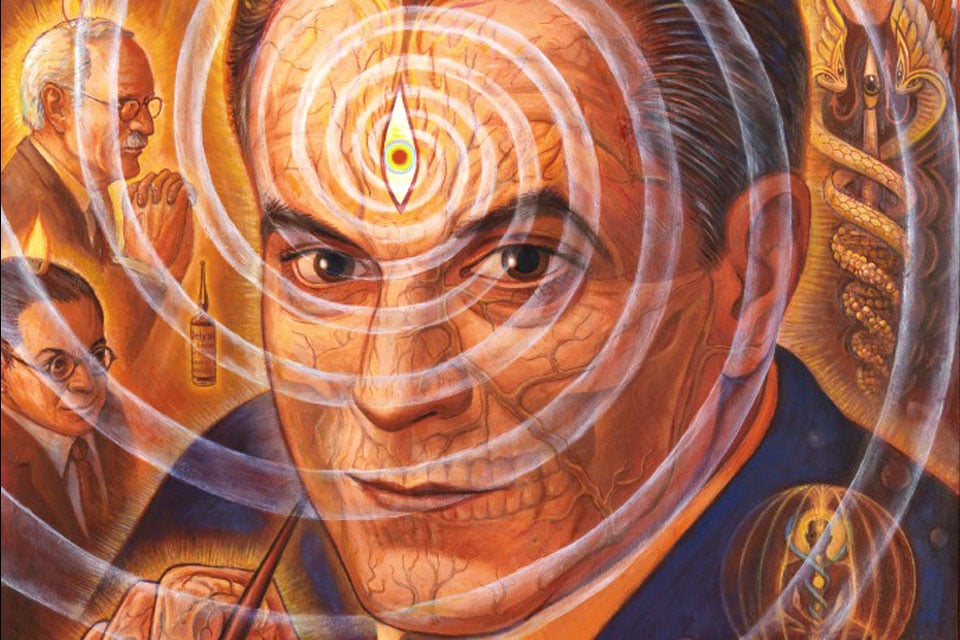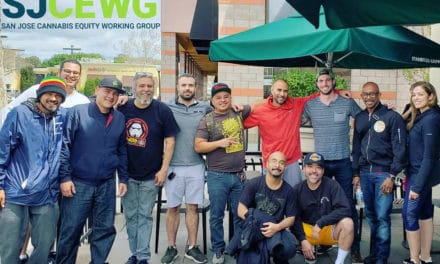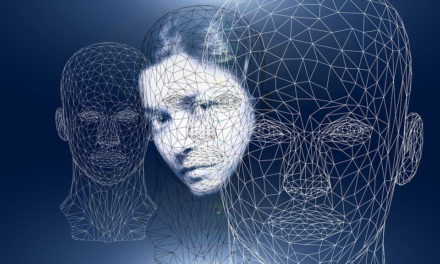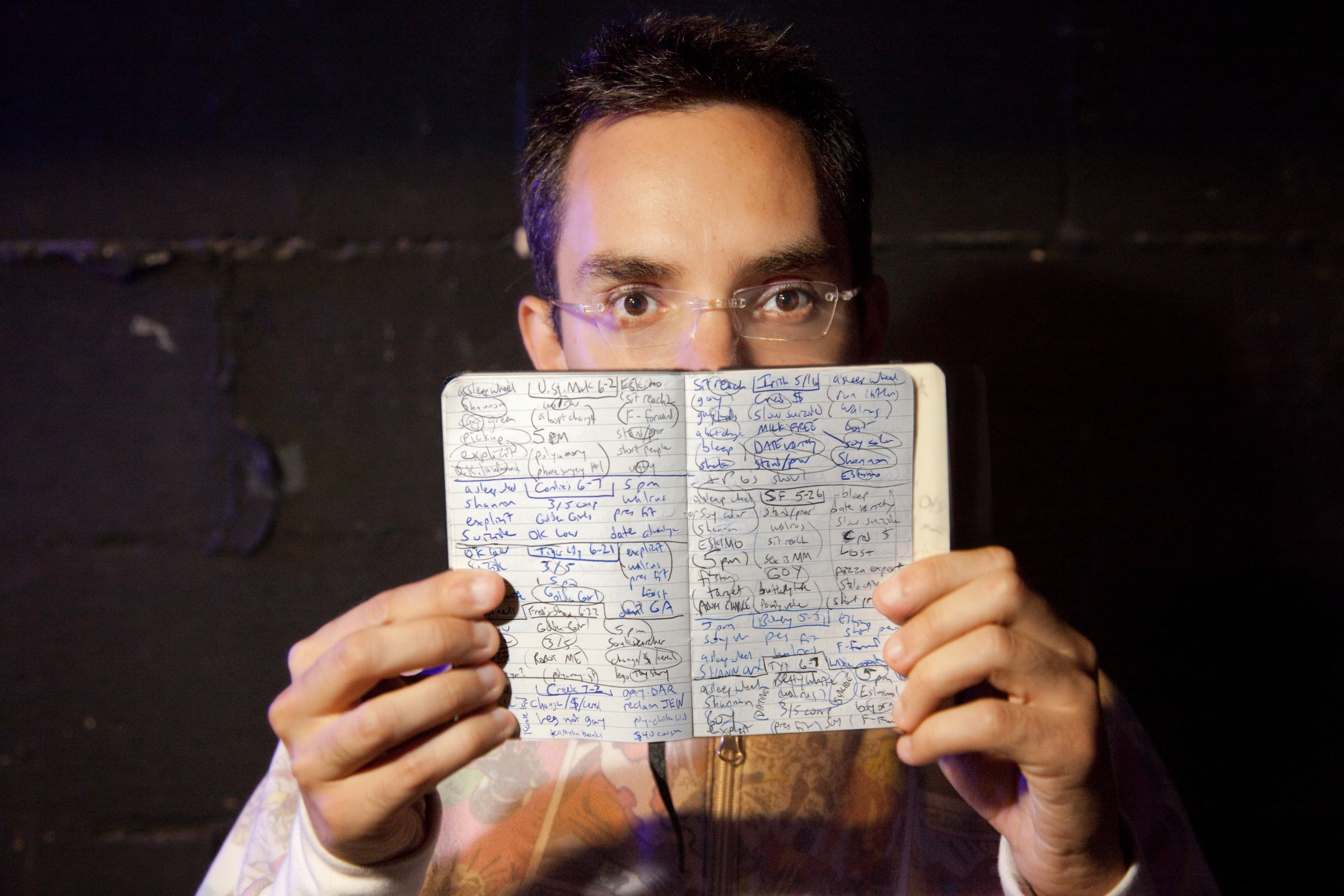
Painting by Alex Grey
“If I am the father of LSD, Stan is the Godfather. Nobody has contributed as much as Stan for the development of my problem child” Dr. Albert Hofmann
To better understand one of the great pioneers of psychedelics and psychology, Stan Grof, we spoke with Javier Charme (first interview here) a clinical psychologist, CIIS graduate, and Director of Formación Transpersonal Grof Latin América in Transpersonal Psychology and Holotropic Breathwork, as well as teacher in several Transpersonal Psychology courses in South America.
Thank you again for speaking with us, Javier. There has been a lot of new and exciting research with psychedelics in recent years, but not many people realize just how advanced Stan Grof’s early psychedelic research was, and how vast his contributions are to both psychedelics and psychology in general. Can you shed some light on Stan Grof´s work and his pioneering psychedelic research?
After its discovery, LSD was sent by Sandoz Pharmaceuticals to several research centers around the world to be studied. In 1954, the young psychoanalyst (and almost psychiatrist) Stan Grof started accompanying psychiatric patients in psychedelic-assisted psychoanalysis at the Psychiatric Research Center in Prague, beginning what would be about 20 years of legal and rigorous scientific research on the use of different psychedelic medicines in psychiatry. This occurred within a communist regime, with its characteristic materialistic, scientific and pragmatic approach, in Europe after two world wars. He directed teams of psychiatric research in Prague and later led the last clinical LSD psychotherapy research teams in Maryland. He accompanied close to 4,000 individual psychedelic sessions with patients suffering from most psychiatric and emotional problems, patients with terminal cancer, and many “healthy” volunteers from different professions and walks of life.
Grof´s modern consciousness research laid the foundations for the psychotherapeutic use of LSD and several other psychedelics. He explored different formats and possibilities for its application, both individually and in groups, with psychoanalysis (psycholytic doses) up to 20 sessions per person, leading up to higher-dose (psychedelic) sessions similar to a powerful shamanic journey. This culminated in a powerful psychedelic therapy experience on 350 to 500 mics in which the patient, within a larger therapeutic process and after the necessary screening and a good preparation, goes deeply inward with closed eyes, listening to music, in a very protected, supportive and mostly non-interventive context for the whole length of the session, usually around ten hours. This method launches you on an inner journey and sequential processes of psychospiritual death and rebirth, guided by the extraordinary self-healing intelligence and capacity of the psyche.
Later the patient was supported with expressive art activities and posterior sessions to facilitate the integration of the experience before the next psychedelic session was scheduled. In this way, this medicine became what it ought to be—a powerful instrument in versed hands, in the service of mental health and society as a whole. The remarkable therapeutic results of this process over a wide range of emotional and psychosomatic problems were discovered and clearly explained in minute detail. The extraordinary therapeutic results achieved are still unmatched in psychology and psychiatry. Regardless of this, macrodosing is still ignored, misunderstood and not widely applied; however, this format guided what is being done today in MDMA-assisted psychotherapy.
The years of research and repeated observations from thousands of high-dose therapeutic sessions helped Grof develop an expanded and precise map of the unconscious mind that deeply revolutionized previous psychoanalytic understandings. LSD allows for quick and direct access to the depths of our unconscious, functioning for the understanding of psychology as the telescope does for astronomy, or the microscope for biology.
When I think of Grof’s contributions, things like holotropic states, birth trauma processing, and transpersonal psychology come to mind. For those like me with just a rudimentary grasp of these things, can you explain them in more detail?
Grof coined the term Holotropic (Holos: totality; Trepein: moving towards) to refer to these exquisite states, that when applied in the right context (set and setting) have a huge healing, integrative, transformative and even evolutionary potential. These states are at the very heart of shamanism, of many rites of passage, and are found in a wide range of spiritual traditions, who have employed these “technologies of the sacred” for millennia. What is new, thrilling and extraordinary is their arrival to the fields of psychology and psychiatry. This hopefully signals the beginning of what will be the second golden era of psychiatry, led by new psychedelic research after the long prohibition of entheogens.
In holotropic states the psyche scans itself, finding what’s most relevant and charged for conscious processing. Experiences reported by patients repeatedly show that besides the biographical unconscious described by Freud, there also exists a very powerful, clear and relevant memory of our gestation and birth, the perinatal level of the unconscious. It´s closely associated with the early and complex traumatic experience of biological birth and the deep, unresolved, emotional and physical repositories that leave powerful imprints in the psyche (these findings are similar to those of Otto Rank, but more detailed and complex.)

Javier Charme with Stan Grof
According to Grof’s model, perinatal experiences come in four distinctive patterns related to different crucial moments of the birth process. The first perinatal matrix (MPB I) is related to gestation and if not perturbed, it reflects the sacredness and contention of a good womb and our deep connection with totality. The second matrix (MPB II) relates to the onset of the birthing process, while the cervix is still closed, which creates a situation of suffering, no exit and victimization. MPB III is related to the titanic struggle to be born, once the cervix is open, while MPB IV is related to birthing itself, the crossing of the channel and cutting of the umbilical cord. These perinatal levels or dimensions are crucial, because when they are integrated and worked through, it has a huge positive influence on diverse emotional problems. Most psychological problems and symptoms in fact draw most of their energy and experiential quality from these perinatal levels.
Grof also adds a vast experiential dimension he calls Transpersonal, which includes a wide range of experiences that transcend our habitual limited identification with our ego, connecting us with all of existence and to direct experiences of spiritual dimensions of consciousness (similar to yet beyond Jung´s concept of collective unconscious). There are very important and effective healing mechanisms which are exclusive to this level too, such as transpersonal and mystical experiences. At this point, inner exploration becomes more like an exploration of the cosmos from within. You may experience karmic, collective, racial, archetypal, phylogenetic and many other fascinating types of experiences.
This empirical research reveals the vast dimensions of human experience, showing that our individual consciousness is part of a much wider consciousness that abides in everything. This agrees with the insights of many spiritual traditions. These findings are so profound that their full assimilation would require a revision not only of psychology, but also of some of the core, basic assumptions of materialistic science.
Later, together with Abraham Maslow and Anthony Sutich (who had previously founded Humanistic psychology), Stan became one of the main founders of Transpersonal psychology, which today possesses a wide and solid theoretical body and has expanded throughout the world, maintaining an eclectic, inclusive, integrative and scientific attitude. It holds a vision that recognizes the spiritual and cosmic dimensions of human beings, and the potential for the evolution of consciousness. It studies all states and levels of consciousness, integrating diverse Eastern and Western approaches to shorten the gap between the knowledge and wisdom of ancient spiritual traditions and the necessary pragmatism of modern science and psychology. It pursues an integral and practical comprehension of human beings by considering our various contexts: biological, interpersonal, social, ecological, spiritual and cosmic.
Grof, recognized as one of the most important psychologists of all times, later developed Holotropic Breathwork, a powerful and effective psychotherapeutic methodology based on this research that works with holotropic states, without the use of psychedelics. This modern consciousness research finally allows for a much wider, deeper and more precise understanding of human consciousness, psychopathology, spirituality, psychotherapy and our relation with totality.
Holotropic psychedelic therapy and Holotropic Breathwork can be applied with very positive results also in many categories of patients who are way beyond the effective reach of talk-based psychotherapies. These patients are often referred to a psychiatrist who medicates them, controlling their symptoms with a palliative approach (treating symptoms), but not addressing or solving the origin or cause of the problem (etiology). In this regard, Grofian psychology brings a unique possibility of working effectively with most symptoms and types of emotional and psychosomatic problems, getting to their very core and producing a change at the source by processing them effectively, avoiding in most instances the need for medication and even hospitalization. This approach may resolve or alleviate the problem, transforming it into an important step in the process of self-transformation and inner growth.
“Stan Grof is a giant among us, and we are fortunate to stand on his shoulders. To call him the Einstein of consciousness would be an understatement. I am deeply personally indebted to him for leading the way. Future generations will forever acknowledge him for helping us wake up from our collective hypnosis that we call everyday reality.” Deepak Chopra M.D.
Most therapeutic methods are mono-dimensional, trying to achieve results working almost exclusively with ideas, or images, or the body, or energetically, etcetera in a normal state of consciousness. Draining and processing the huge amounts of energy behind symptoms like this is like trying to empty a lake with a spoon, the method falls short of the task. So, exchanging this for an extraordinary inner journey that awakens, catalyzes and mobilizes the tremendous intrinsic healing capacity of the psyche and the body is truly a remarkable achievement. Holotropic states often simultaneously involve and benefit from unconscious processing at all the experiential levels where transformation can be reached: somatic, energetic, emotional , symbolic, cognitive, and spiritual. In a brief time, this allows for a much wider capacity to communicate and balance the ego with the unconscious and supra-conscious.It catalizes the powerful intrinsic self healing intelligence and capacity of the psyche (organismic intelligence, inner healer, Self in Jungian terms), or it expands and regulates the communication between Hylotropic and Holotropic Modes of consciousness. When this center of sheer organismic intelligence becomes the active leading agent of transformation, the system spontaneously creates the very best possible movement of healing, powerfully, safely and elegantly within its own parameters. It naturally unfolds intrinsic and very effective healing mechanisms. This allows for a great amount of inner material to be processed, often quite swiftly. This process naturally leads towards the awakening of ecological, spiritual and social awareness.
“LSD is not a problem child, in fact, he is a prodigious child. The problem is that he had to grow up in a dysfunctional family.” Stanislav Grof
To honor the depth and precision of Stan´s work, explained in about 20 books and 160 scientific papers, I would highly recommend that interested people, especially therapists and psychonauts, begin by reading the following titles: Beyond the Brain, Psychology of the Future, LSD Psychotherapy, The Stormy Search for the Self and The Way of The Psychonaut. You can also see trainings, interviews and new virtual courses at www.respiracionholotropica.com, and visit www.stangrof.com for scientific papers, interviews and training.









